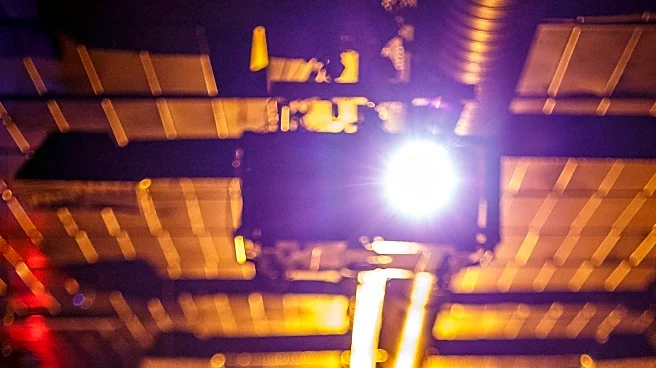What's Happening?
Spike Island, a creative hub located in Bristol, has embarked on an extensive environmental retrofit of its historic building, originally constructed in the 1950s. The initiative was driven by concerns over energy costs during the Covid-19 pandemic, which revealed significant heat loss and energy inefficiency. The organization has installed solar panels, heat pump systems, and improved insulation, aiming to reduce heat loss by 50% and transition to green energy sources. This project is part of a broader capital masterplan developed by Max Fordham and 6a Architects, set to extend into the next decade. Spike Island's efforts have earned it recognition from the Gallery Climate Coalition (GCC) as an example of excellent environmentally aware practice.
Why It's Important?
The environmental retrofit at Spike Island highlights the growing trend of arts organizations adopting sustainable practices. By reducing energy costs and emissions, Spike Island not only contributes to environmental conservation but also secures its financial future. The initiative demonstrates that sustainability can be economically viable, offering a model for other organizations to follow. The project also enhances the cultural value of Spike Island, fostering a community of artists and creatives committed to environmental responsibility. This approach aligns with broader societal shifts towards sustainability, potentially influencing public policy and encouraging similar actions across the arts sector.
What's Next?
Spike Island plans to continue its sustainability efforts by embedding environmentally conscious practices across its exhibitions and operations. The organization is expanding its Green Team to include volunteers from its community, aiming to create a more environmentally-aware culture. Future plans include feeding surplus renewable energy back into the national grid and further developing its community garden initiative. These steps are expected to enhance Spike Island's role as a leader in sustainable practices within the arts community, potentially inspiring other organizations to adopt similar measures.
Beyond the Headlines
Spike Island's initiative reflects a broader cultural shift towards sustainability in the arts sector. By integrating environmental responsibility into its operations, the organization sets a precedent for others, highlighting the ethical and practical benefits of sustainable practices. The project also underscores the importance of community involvement in achieving environmental goals, fostering a sense of shared responsibility and collaboration. As more organizations recognize the financial and cultural advantages of sustainability, this trend could lead to significant long-term shifts in the arts industry.










